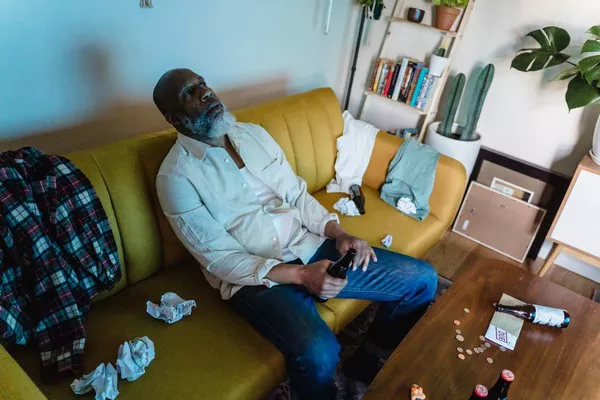Srinagar, Kashmir – Aayat Hameed, after consulting numerous doctors in the bustling city of Indian-controlled Kashmir, was advised to seek the guidance of a mental health professional for her inexplicable bouts of anxiety, sudden palpitation attacks, and sporadic yet intense thoughts of self-harm. A psychiatrist diagnosed her with acute depression.
On a scorching summer day, Hameed joined a multitude of other patients at a mental health clinic in Srinagar, where she embarked on a regimen of counseling combined with prescribed medications.
“I came to realize that consulting a psychiatrist or confiding in someone you trust can significantly aid in dealing with thoughts of suicide and depression,” Hameed remarked. The young student noted that she has already made remarkable progress, recovering approximately 40% during her one-month treatment.
For over three decades, the people of Kashmir have been enduring a series of crises. Violent armed uprisings, ruthless counterinsurgency operations, unprecedented militarization, and securitization, coupled with unmet aspirations for self-determination, have contributed to the prevalence of depression and substance abuse in this disputed region, as experts attest.
The breathtaking Himalayan region has remained a focal point for over 70 years, witnessing tensions and conflicts between arch-rivals India and Pakistan, both of which control parts of Kashmir while asserting sovereignty over the entire region. Amidst the fierce clashes, Kashmir’s tight-knit Muslim families once constituted a resilient support network.
However, this support system unraveled when an armed rebellion erupted in 1989.
Since then, tens of thousands of civilians, insurgents, and security personnel have lost their lives in a conflict that has left Kashmiris weary, traumatized, and shattered. Virtually every one of the 7 million residents of the Kashmir valley has been touched by the specter of violence.
This prolonged conflict has created two lost generations: those who came of age in 1989, witnessing their childhoods marred by warfare, and today’s teenagers, who have never truly experienced a carefree childhood.
Saiba Varma, an associate professor of anthropology at the University of California, San Diego, who conducted extensive research on psychiatric issues in Kashmir, emphasized, “The most fundamental elements of a healthy psyche—a sense of safety and security—have been under siege for decades in Kashmir.”
While the daily violence has substantially waned in recent years, and the region’s semi-autonomous status was revoked in 2019 under the guise of restoring normalcy, the invisible wounds of Kashmir’s enduring conflict persist within the psychiatric wards of numerous hospitals. On any given day, hundreds seek help for mental disorders and substance dependencies.
A 2015 study by the aid organization Doctors Without Borders, in collaboration with the University of Kashmir and the Institute of Mental Health and Neurosciences in Srinagar, revealed that “nearly 1.8 million adults (45% of the adult population) in the Kashmir valley are experiencing symptoms of mental distress, with 41% displaying signs of probable depression, 26% showing probable anxiety, and 19% likely suffering from Post-Traumatic Stress Disorder.”
Although the mental health infrastructure has expanded from a mere four psychiatrists and a single primary mental health care clinic in Srinagar in the early 2000s to approximately 17 government-run clinics staffed by over six dozen professionals across the region today, the mental health system remains inundated.
Varma, the anthropologist, asserts that the mental health crisis is an outgrowth of the social and political conditions prevailing in the region. She stated, “The ongoing militarization of daily life has eroded many of the cultural and religious coping mechanisms that Kashmiri people traditionally relied upon, leaving them dependent on an overburdened and medication-centric healthcare system.”




























